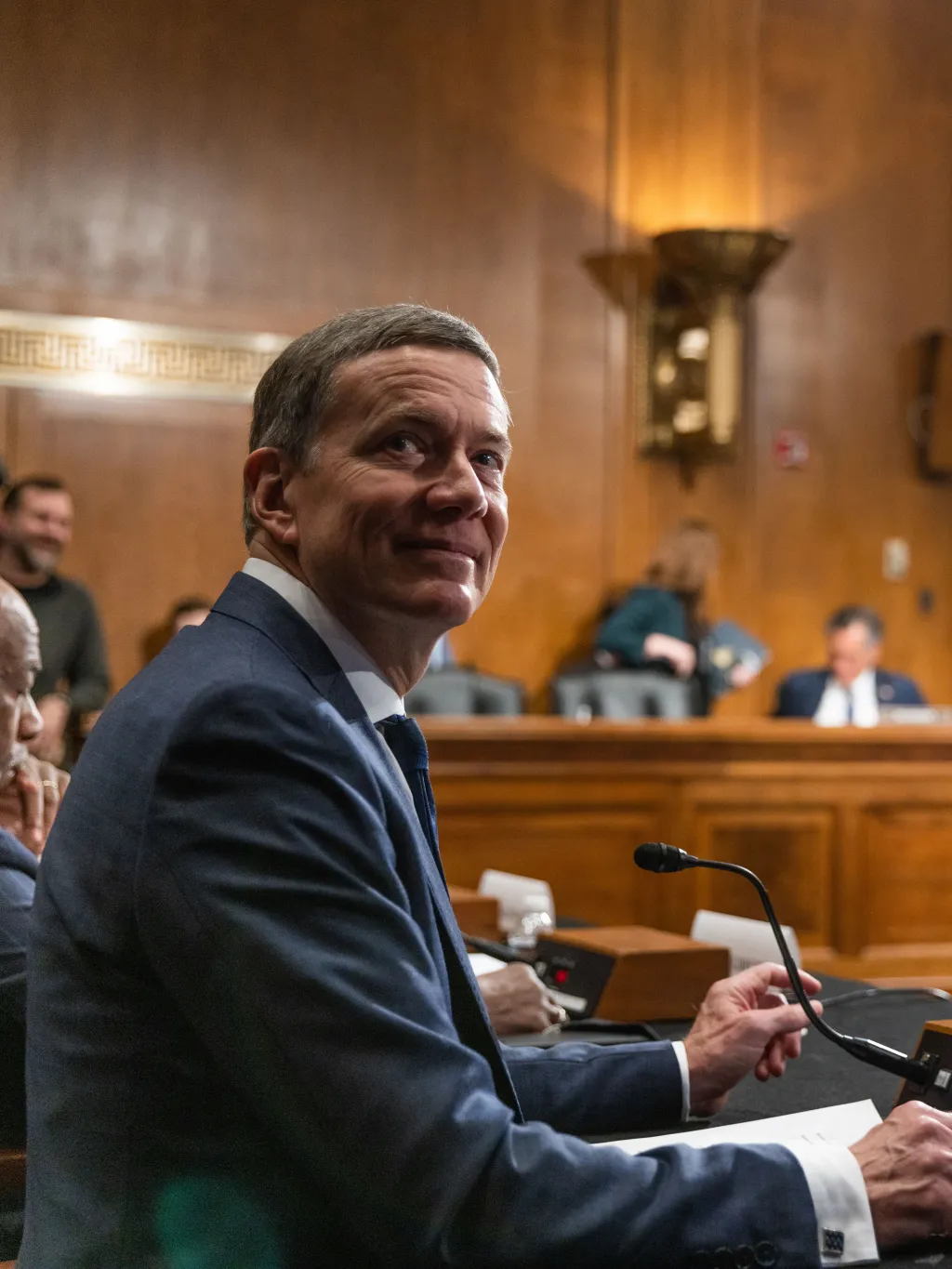
This is the President's second Congressional testimony about addressing shortages in the health care workforce
UNE President James D. Herbert, Ph.D., has, for the second time, testified before the U.S. Senate Committee on Health, Education, Labor, and Pensions (HELP) Subcommittee on Primary Health and Retirement Security in Washington, D.C., about the health care workforce shortage and methods to improve it.
Herbert, who was introduced by U.S. Sen. Susan Collins of Maine, spoke during a Congressional hearing titled “Examining Health Care Workforce Shortages: Where Do We Go From Here?” at the request of Subcommittee Chairman U.S. Sen. Bernie Sanders of Vermont. Herbert first spoke before the HELP subcommittee on the topic in May 2021.
According to the American Hospital Association, the United States will face a shortage of up to 124,000 physicians by 2033, including shortages of primary care physicians and specialists, and will need to hire 200,000 nurses per year to meet demand.
The Association of American Medical Colleges has said the U.S. may lose as many as 55,200 primary care physicians by that time.
To address current and predicted workforce shortages, Herbert proposed six specific strategies:

- Increase the number of doctors, nurses, and other health care professionals we educate by expanding partnerships between universities and community health care settings to develop additional training opportunities, revise out-of-date policies, provide targeted one-time adjustments to expand health care training infrastructure, and develop strategic scholarship and loan-repayment programs
- Intentionally recruit more students who look like the communities we need to serve, as individuals from underrepresented groups are more likely to seek out practitioners who share their identities and background
- Use a variety of tools to encourage health care providers to practice in underserved areas, including rural, tribal, and medically underserved urban communities
- Leverage the power of technology, including telehealth and digital medicine, to reach underserved communities and integrate robust telehealth training for all of our health profession students in close partnership with our various training sites
- Modify state-level regulations to allow health professionals to practice at the top of their scope
- Fundamentally change the prevailing educational model by encouraging accrediting bodies to allow training programs to be more creative and flexible and promoting Interprofessional Education (IPE) training models to break down traditional health care training and practice siloes





Herbert stressed that no single strategy outlined in his testimony can solve the health care worker shortage; rather, they must work in concert.

“Successfully addressing America’s health care workforce crisis will require not merely acting on each of these individual initiatives in isolation but by seamlessly integrating them,” he said. “Although strategic investment of resources will be required, much of the work we confront reflects cultural changes that will require strong leadership; a willingness to innovate; and coordinated partnership between academia, government, industry, and the nonprofit sector.”
Watch the testimony
UNE President James D. Herbert testifies as the first witness before the Senate Committee on Health, Education, Labor, and Pensions about ways to mitigate the shortage of health professionals, including efforts undertaken by UNE to close the gap.
President Herbert pens op-Ed on ways to address health workforce shortage

"The shortage of health care workers in Maine, where I live and work, is a harbinger for the struggles the rest of the country will increasingly confront to hire and retain the individuals who make up the backbone of health care," President Herbert writes in his op-ed in STAT News. "The challenges the state face are ahead of what other parts of the country will face as the nation ages and as urbanization creates pockets of underserved populations in cities as well as in vast remote rural areas."
News Coverage of the Hearing
- The nursing shortage is bringing lawmakers together to find a solution (Employee Benefit News)
- President Herbert’s testimony prominently featured in interprofessional magazine (CACHE Magazine on Issuu)
- Help health care staff shortages by reducing factors that contribute to burnout (Medical Economics)
- Senate Education Committee Issues Testimony From University of New England President Herbert (Targeted News Service)
- Experts: National Physician Shortage Will Hit Rural Areas Harder (KAXE-KBXE)
- Experts: National Physician Shortage Will Hit Rural Areas Harder (The Daily Yonder)
- Healthcare Worker Shortage (Technical Education Post)
- UNE President James Herbert testifies before Congressional committee on methods to combat health workforce shortage (Portland Press Herald)
- 5 ways to address the shortage of health care workers (Pres. Herbert's op-Ed in STAT)
- Lawmakers push for answers to healthcare worker shortage (Nextar)
- Lawmakers push for answers to healthcare worker shortage (Nextar)
- Lawmakers push for answers to healthcare worker shortage (Nextar)
- Lawmakers push for answers to healthcare worker shortage (Nextar)
- Lawmakers push for answers to healthcare worker shortage (Nextar)
- Lawmakers push for answers to healthcare worker shortage (Nextar)
- Lawmakers push for answers to healthcare worker shortage (Nextar)
- Lawmakers push for answers to healthcare worker shortage (Nextar)
- Lawmakers push for answers to healthcare worker shortage (Nextar)
- Health Care Week in Review (JDSUPRA)
- Senator Collins Introduces UNE President at Hearing on Health Care Workforce Crisis (Sen. Susan Collins)
- Senate HELP Committee Charts Course To Fix Health Workforce Crisis (Inside Health Policy) [Subscription required]
- Lawmakers, health care professionals working to solve staffing shortages (NEWS CENTER Maine)
- UNE president testifies before Senate on how to combat shortage of health care workers (MaineBiz)
- Senate HELP Committee Holds Hearing on Critical Shortage of Doctors, Nurses (Clarion Cause Action)
- What Should Be Done About the Health Workforce Shortage? (MedPage Today)
- We must address the widespread nursing shortage in this country (Utah Policy)
- Immigration reemerges as workforce solution in scattershot Senate hearing (McKnight's Long-Term Care News)
- Senators note community colleges’ role in preparing healthcare workers (CC Daily)
- Lawmakers stress urgency of healthcare worker shortage (BestInAu)
- What to do about the shortage of skilled workers in the healthcare sector? (Trendeepro)
- Key Senate committee takes first step toward tackling health workforce shortages (STAT News)
- Senate examines ways to address nationwide nursing shortage (United Press International)
- Senate holds hearing to examine health care workforce shortages, solutions (American Hospital Association)
- Lawmakers stress urgency of healthcare worker shortage (Healthcare Dive)
- Chairman Sanders to Hold Hearing on the Health Care Workforce Crisis (Sen. Bernie Sanders)
- Sen. Sanders to host meeting on health care worker shortage (WCAX3)
- Sanders to hold hearing on the health care workforce crisis (VermontBiz)